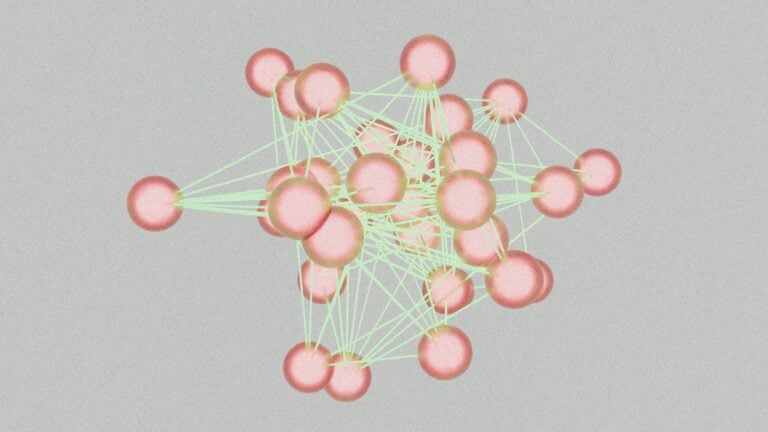
Unlock the secrets of frequency conversion. Learn how to convert Hz, kHz, MHz, RPM, and more with practical examples and real-world applications. Essential for engineers and technicians.
Mastering Frequency Conversions: A Practical Guide for Engineers
Understanding and converting frequency units is fundamental across countless scientific and engineering disciplines. Whether you’re designing circuits, analyzing audio, or monitoring machinery, precise frequency conversion applications are essential for accurate communication and optimal performance. For quick and reliable calculations, tools like the iotools.cloud frequency converter can be invaluable.
The Essence of Frequency: Why It Matters
Frequency quantifies how often a recurring event happens per unit of time. It’s a cornerstone concept in physics and engineering, influencing everything from the speed of data transmission to the pitch of a sound. Grasping its various expressions allows professionals to seamlessly transition between different measurement contexts.
Misinterpreting or incorrectly converting frequency can lead to significant errors, impacting system design, data analysis, and even safety protocols. Precision in these conversions is not just about numbers; it’s about ensuring systems operate as intended and data is interpreted correctly.
Decoding Common Frequency Units
Frequency manifests in several common units, each serving specific applications. Understanding what each unit represents is the first step toward mastering conversions.
- Hertz (Hz): The SI unit of frequency, representing one cycle per second. It’s universally used for wave frequencies, such as sound waves or electromagnetic waves. Kilohertz (kHz), Megahertz (MHz), and Gigahertz (GHz) are common multiples.
- Revolutions Per Minute (RPM): Often used in mechanical engineering to describe rotational speed, such as an engine’s crankshaft or a motor’s shaft.
- Radians Per Second (Rad/s): Primarily used for angular frequency (ω) in physics and engineering, especially in the context of rotating objects or oscillating systems. It directly relates to Hz via the constant 2π.
- Beats Per Minute (BPM): Commonly found in music to denote tempo and in physiology to measure heart rate.
Here’s a quick overview of how these units broadly apply:
| Unit | Description | Common Application |
|---|---|---|
| Hz | Cycles per second | Electrical signals, sound waves, radio waves |
| kHz | Thousands of cycles per second | Audio frequencies, basic electronics |
| MHz | Millions of cycles per second | Radio broadcasting, computer clock speeds |
| GHz | Billions of cycles per second | Wireless communication (Wi-Fi, 5G), processor speeds |
| RPM | Revolutions per minute | Motor speeds, rotating machinery |
| Rad/s | Radians per second | Angular velocity, oscillatory motion |
| BPM | Beats per minute | Music tempo, heart rate |
Practical Frequency Conversion: Mastering the Math
Converting between frequency units involves straightforward multiplication or division. The key is knowing the correct conversion factor for each pair of units.
Hertz (SI Prefix) Conversions
These are simple base-10 conversions:
- Hz to kHz: Divide by 1,000 (e.g., 5,000 Hz = 5 kHz)
- kHz to Hz: Multiply by 1,000 (e.g., 2.5 kHz = 2,500 Hz)
- kHz to MHz: Divide by 1,000 (e.g., 7,500 kHz = 7.5 MHz)
- MHz to GHz: Divide by 1,000 (e.g., 1,200 MHz = 1.2 GHz)
RPM to Hz (and Vice-Versa)
Since 1 minute equals 60 seconds, converting RPM to Hz (cycles per second) involves dividing by 60.
- RPM to Hz: Divide RPM by 60
Example: A motor spinning at 3,600 RPM is 3,600 / 60 = 60 Hz. - Hz to RPM: Multiply Hz by 60
Example: A 50 Hz AC power signal equates to 50 * 60 = 3,000 RPM (for a synchronous motor).
Rad/s to Hz (and Vice-Versa)
The relationship between angular frequency (ω in rad/s) and linear frequency (f in Hz) is ω = 2πf. Therefore, to convert:
- Rad/s to Hz: Divide Rad/s by 2π (approximately 6.28318)
Example: A rotating object with an angular velocity of 100 rad/s is 100 / (2π) ≈ 15.92 Hz. - Hz to Rad/s: Multiply Hz by 2π
Example: A 60 Hz signal has an angular frequency of 60 * 2π ≈ 376.99 rad/s.
BPM to Hz (and Vice-Versa)
Similar to RPM, BPM also uses “per minute,” so the conversion is identical.
- BPM to Hz: Divide BPM by 60
Example: A heart rate of 72 BPM is 72 / 60 = 1.2 Hz. - Hz to BPM: Multiply Hz by 60
Example: A musical piece at 2 Hz is 2 * 60 = 120 BPM.
Frequency Conversion Applications: Real-World Impact
The ability to convert frequency units underpins various critical applications across diverse industries. Understanding frequency modulation, for example, is essential in radio communication.
- Electrical Engineering: Converting between AC power frequencies (Hz) and motor speeds (RPM) is crucial for designing and optimizing industrial machinery. Understanding how frequency impacts impedance and resonance requires precise conversions for circuit design.
- Telecommunications: Converting between different frequency bands (MHz to GHz) is vital for understanding spectrum allocation for Wi-Fi, cellular networks, and satellite communications. Data rates often depend on allocated bandwidth.
- Audio Engineering: Musicians and sound engineers convert between musical tempo (BPM) and rhythmic subdivisions (often thought of in Hz for synthesis) to ensure synchronization. Understanding how frequencies relate to musical notes helps in tuning and mixing.
- Automotive Industry: Engine RPM is a primary metric, often converted to piston cycles per second (Hz) for performance analysis or valve timing calculations.
- Biomedical Applications: Monitoring heart rates (BPM) and converting them into physiological frequencies (Hz) aids in diagnosing cardiac conditions. Brain wave activity is measured in Hz, with different frequency bands correlating to various states of consciousness.
- Manufacturing & Robotics: Machine tool spindle speeds (RPM) are converted to linear feed rates for cutting operations, requiring conversions involving diameter and circumference. Robot arm movements might be described in angular velocity (Rad/s) then translated to linear speeds for programming.
Navigating Common Conversion Pitfalls
While seemingly straightforward, frequency conversions can trip up even experienced professionals. Awareness of common pitfalls helps avoid errors.
- Mistaking Angular vs. Linear Frequency: One of the most common errors is confusing Hz (linear frequency, f) with Rad/s (angular frequency, ω). Always remember the 2π factor.
- Powers of Ten Errors: When dealing with kHz, MHz, or GHz, it’s easy to misplace a decimal or forget a factor of 1,000. Double-check your multiplication or division by 103, 106, or 109.
- Contextual Ambiguity: Ensure the unit you’re converting is appropriate for the context. For instance, while BPM and RPM both involve “per minute,” they apply to vastly different physical phenomena.
- Unit Consistency: Always ensure all other variables in a calculation are in consistent units before performing frequency conversions. For example, if using a formula that requires velocity in meters per second, don’t use kilometers per hour without converting first. For further reading, consider exploring resources on SI unit consistency from organizations like NIST.
Simplify Your Frequency Calculations
Mastering frequency conversions empowers you to work confidently across diverse technical fields. By understanding the underlying principles and common conversion factors, you can navigate complex problems with greater ease. Remember to always verify your calculations, especially when dealing with critical applications. For more in-depth exploration of related topics, consider a deep dive into signal analysis to complement your understanding of frequency.
When facing complex or multiple conversions, leveraging a dedicated online tool can save time and minimize errors. Practice these conversions regularly to build proficiency, and you’ll find yourself seamlessly transitioning between different frequency representations.
Install Our Extensions
Add IO tools to your favorite browser for instant access and faster searching
恵 Scoreboard Has Arrived!
Scoreboard is a fun way to keep track of your games, all data is stored in your browser. More features are coming soon!





